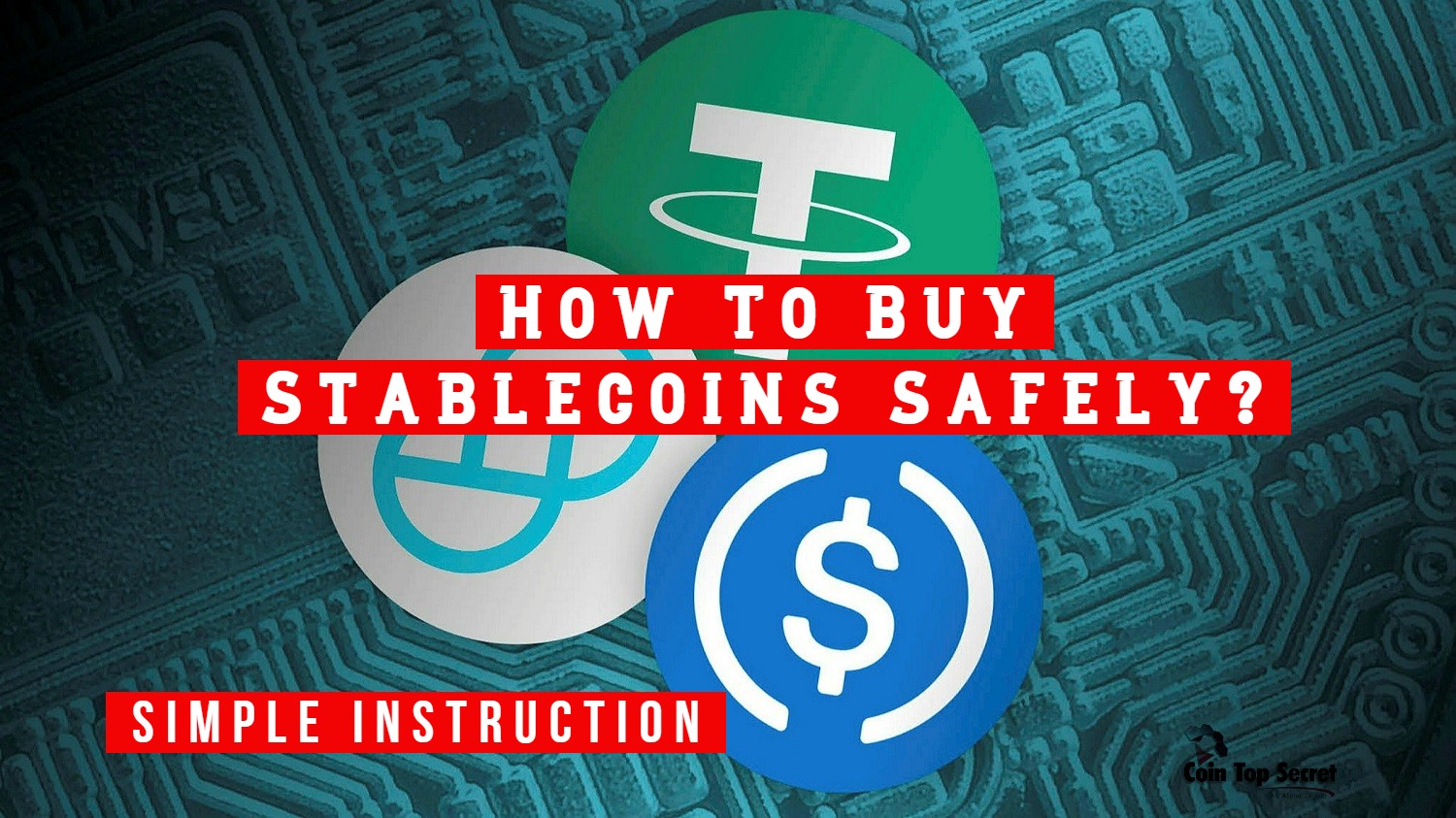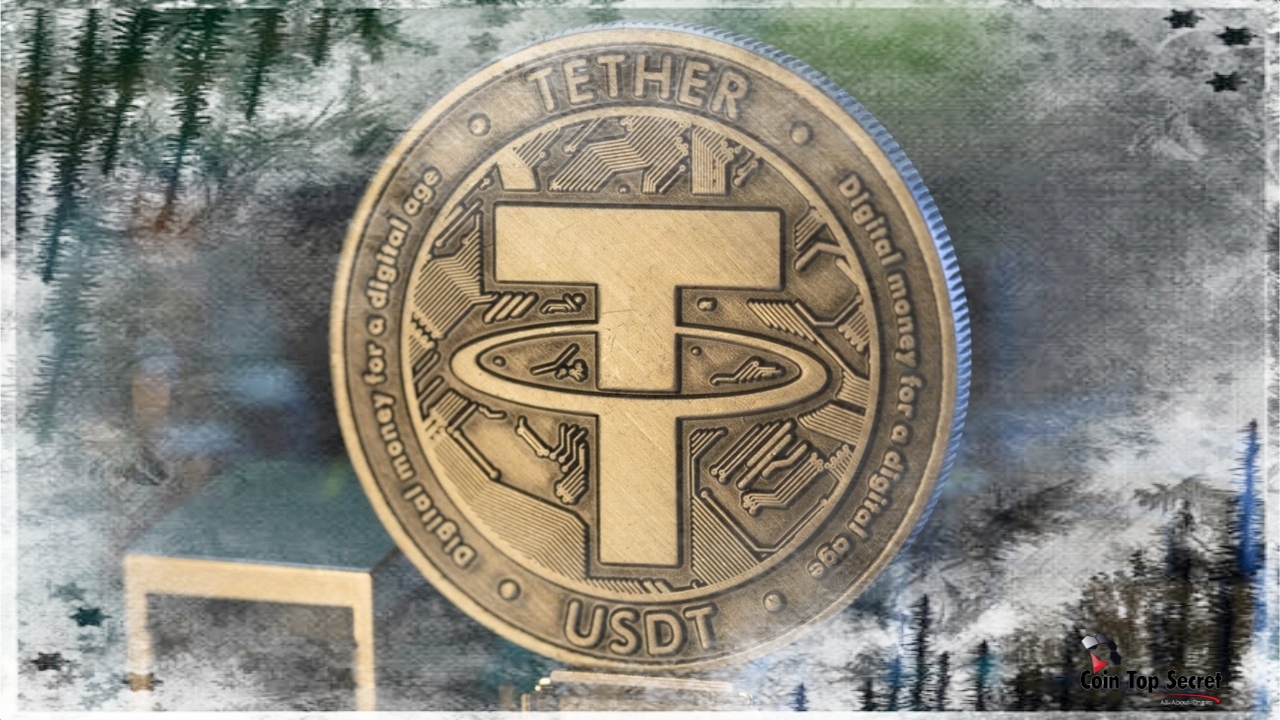In the world of cryptocurrencies, stablecoins are changing the game. They connect the old financial system with the new digital world. These digital assets keep their value stable, solving the problem of cryptocurrency price swings.
Stablecoins are tied to something stable like the US dollar or gold. They use different methods to keep their value steady. This makes them key for smooth transactions and financial activities in the crypto world.
Stablecoins are making a big impact on digital assets. They open up new chances for safe and easy entry into the crypto world. By linking traditional and decentralized finance, stablecoins are key to crypto’s global growth.
Key Takeaways
- Stablecoins are digital assets that keep their value stable, often tied to fiat currencies or other stable assets.
- They act as a bridge between traditional finance and the crypto world, making transactions and financial activities smooth.
- Stablecoins use methods like collateralization or algorithmic adjustments to keep their value steady.
- Stablecoins can unlock new chances and help more people and businesses use cryptocurrencies worldwide.
- Knowing how stablecoins work is important for understanding the changing digital asset world.
Understanding the Fundamentals of Digital Stablecoins

Stablecoins are a big deal in the world of digital money. They keep their value steady, blending the good parts of digital and traditional money. The Harvard Business Review sees them as a game-changer.
Types of Digital Currency Stability Mechanisms
Stablecoins use different ways to stay stable. Some tie their value to real money, like the US dollar. Others use a mix of assets or smart algorithms. These methods help make stablecoins a solid choice for digital money needs.
The Role of Blockchain in Stablecoin Operations
Blockchain is key for stablecoins. It makes sure transactions are fast, cheap, and trustworthy. This tech has helped digital currency solutions grow fast.
Historical Development of Stable Digital Assets
Stable digital assets have come a long way. Early ideas have turned into today’s advanced stablecoins. The blockchain technology behind them has also improved, making harvard business review stablecoin systems better.
“Stablecoins have the potential to revolutionize the way we think about digital currency, offering a unique blend of the benefits of cryptocurrencies and the price stability of traditional fiat currencies.”
The Core Technology Behind Stablecoin Systems
Stablecoins are digital assets that keep their value stable. They use advanced blockchain, smart contracts, and distributed ledger technology. These technologies work together to make stablecoin systems reliable and secure.
The blockchain is at the center of stablecoins. It’s a digital ledger that records all transactions. This network, secured by cryptography, is the base for stablecoins to work securely and without change.
Smart contracts are also key in stablecoin systems. They are digital agreements that run on the blockchain. They automate the processes for minting, redeeming, and keeping stablecoin prices stable.
The use of distributed ledger technology boosts stablecoin operations. It makes them more efficient and transparent. This way, everyone in the stablecoin world sees the same information and transactions.
“The core technology behind stablecoins, including blockchain, smart contracts, and distributed ledger technology, is what enables these digital assets to maintain their stability and reliability.”
Thanks to these technologies, stablecoin systems offer a secure, clear, and efficient choice. They are becoming more popular and are being used more in the global financial world.
Fiat-Backed vs. Crypto-Collateralized Stablecoins
Stablecoins are a special part of the digital world. They offer stability in a market full of ups and downs. The Deloitte stablecoin report looks at two main types: fiat-backed and crypto-collateralized.
Dollar-Pegged Stablecoin Mechanisms
Fiat-backed stablecoins are tied to real money, like the US dollar. They keep their value stable by holding the same amount of real money in reserve. This makes them reliable digital assets that can easily switch to and from real money.
Cryptocurrency Collateral Models
Crypto-collateralized tokens use other cryptocurrencies as backing. They often use more cryptocurrency than needed to reduce price swings. This method uses blockchain for a stablecoin that doesn’t rely on old banking systems.
Hybrid Backing Structures
The Deloitte stablecoin report also talks about mixing both types. These hybrid systems aim to balance the stability of fiat-pegged assets with the freedom of crypto-backed ones.
| Stablecoin Model | Backing Mechanism | Key Advantages | Potential Challenges |
|---|---|---|---|
| Fiat-Backed | Pegged to traditional fiat currencies | Stability tied to established fiat currencies Easier integration with traditional finance | Reliance on centralized institutions Potential regulatory oversight |
| Crypto-Collateralized | Backed by a pool of cryptocurrencies | Decentralized and transparent backing Less reliance on traditional financial infrastructure | Volatility of underlying cryptocurrencies Complexity of collateral management |
| Hybrid | Combination of fiat and crypto-based backing | Potential to balance stability and decentralization Flexible collateral management | Inherits challenges from both models Increased complexity in design and operation |
The digital world is always changing. The Deloitte stablecoin report helps us understand the good and bad of fiat-backed stablecoins and crypto-collateralized tokens.
“The choice between fiat-backed and crypto-collateralized stablecoins often comes down to a balance between stability and decentralization.”
Real-World Applications and Use Cases
Stablecoins are changing the financial world, making a big impact in many areas. They are key in cross-border payments, making it easy and cheap to send money across borders. This helps both people and businesses.
In remittances, stablecoins are making a big change. They make sending money to family and friends abroad faster, safer, and cheaper. This helps millions of people around the world.
Stablecoins also play a big role in decentralized finance (DeFi). They help make DeFi activities like lending, borrowing, and trading better. This makes things more open, easy to use, and in control of the users.
Stablecoins in Cross-Border Payments
- Enabling faster, more secure, and cost-effective international transactions
- Reducing the friction and high fees associated with traditional cross-border payment methods
- Facilitating global commerce and financial inclusion
Stablecoins in Remittances
- Providing a more efficient and affordable way for individuals to send money to family and friends abroad
- Empowering unbanked and underbanked populations with access to financial services
- Reducing the barriers and costs associated with traditional remittance channels
Stablecoins in Decentralized Finance (DeFi)
- Serving as a stable foundation for various DeFi applications and protocols
- Enabling peer-to-peer lending, borrowing, and trading activities
- Fostering financial innovation and accessibility within the decentralized ecosystem
As more people use stablecoins, their effect on these areas will grow. They are changing how we handle cross-border payments, remittances, and DeFi.

Understanding Stablecoin Market Dynamics
Stablecoins are a new and interesting part of the cryptocurrency world. To really get them, we need to look at the market behind them. We’ll check out biitland.com stablecoins and more to see what makes them tick.
Price Stability Mechanisms
Stablecoins are special because they keep their value steady, like the US dollar. They use different ways to stay stable, like using real money as backup. Knowing how they work helps us see if they’re reliable.
Market Cap Analysis
Looking at the market value of stablecoins tells us a lot. By studying market analysis of top stablecoins, we see trends and growth. This helps us understand who’s leading and what’s making the market grow.
Trading Volume Patterns
The trading volume of stablecoins is also key. Watching how it changes shows us how active and liquid they are. This tells us how stablecoins are used in trading and payments.
Exploring stablecoin market dynamics gives us a full picture of their world. It helps us see if they’re here to stay. As the biitland.com stablecoins market grows, knowing these trends is vital for everyone involved.
Regulatory Framework and Compliance Measures
As the stablecoin market grows, regulatory bodies are setting up strong rules. These rules help keep stablecoins stable, clear, and responsibly developed. They are key for the sector’s future.
Different places have their own rules for stablecoins. Policymakers focus on protecting consumers, fighting money laundering, and keeping the financial system stable. Stablecoin makers and users must follow these rules, which vary by place.
Navigating the Regulatory Landscape
The rules for stablecoins are changing and vary worldwide. Important parts of these rules include:
- Licensing and registration for stablecoin makers and services
- Rules for being open about how stablecoins are managed
- Guidelines to fight money crimes
- Rules on money and liquidity to keep stablecoins stable
- Taxes and reports for stablecoin dealings
Stablecoin companies need a strong compliance plan. They must keep up with rule changes and adjust their work as needed.
Compliance Best Practices
To follow the rules, stablecoin companies should use good practices. Some important ones are:
- Strong AML and KYC steps
- Clear and checkable reserve management
- Safe tech and controls to lower risks
- Regular talks with regulators and keeping up with new rules
- Putting compliance into the business plan
By focusing on rules and compliance, stablecoin companies can build trust. This trust is key for the digital asset world to grow and stay stable.

| Regulatory Aspect | Key Considerations |
|---|---|
| Licensing and Registration | Getting the right licenses and registrations to work as a stablecoin issuer or service provider |
| Reserve Management | Having clear and checkable reserve management to keep the stablecoin value stable |
| Anti-Money Laundering | Using strong AML and KYC steps to stop money crimes |
| Capital and Liquidity | Having enough money and liquidity to keep the stablecoin system stable |
| Reporting and Taxation | Meeting reporting needs and handling taxes from stablecoin deals |
“Following the rules is vital for stablecoins to be accepted and used widely. Working with policymakers and following best practices are essential for this changing world.”
Risk Assessment and Security Protocols
The stablecoin market is growing fast. It’s vital to have strong cybersecurity and risk management. Stablecoin systems need to protect digital assets well to keep users and investors trusting them.
Smart Contract Security
Smart contracts are key in many stablecoin systems. Their security is a top priority. It’s important to check and test smart contracts well to find and fix problems.
Regular checks, formal checks, and bug bounty programs can make smart contracts safer.
Collateral Management Risks
Stablecoins often use collateral like fiat or cryptocurrencies to stay stable. Managing this collateral well is key to avoid risks. It’s important to assess risks, diversify collateral, and watch its value closely.
Operational Security Measures
Stablecoin platforms need strong security beyond smart contracts and collateral. They should have good key management, multi-factor authentication, and access controls. They also need plans for when bad things happen.
Regular security checks and staying alert are crucial to keep stablecoin systems safe.
By focusing on cybersecurity, risk management, and auditing, stablecoin projects can make their digital assets more reliable. This can help more people trust and use them, making them part of the traditional financial world.
| Security Aspect | Key Considerations |
|---|---|
| Smart Contract Security | Rigorous code audits and testing Formal verification of contract logic Bug bounty programs and vulnerability disclosure |
| Collateral Management Risks | Diversification of collateral assets Continuous monitoring of collateral levels Robust risk assessment and mitigation strategies |
| Operational Security Measures | Secure key management and access controls Multi-factor authentication for user accounts Comprehensive incident response planning |
“Ensuring the security and stability of stablecoin systems is paramount as these digital assets become increasingly integrated into the global financial landscape.”
Integration with Traditional Financial Systems
Stablecoins are becoming a big part of traditional finance, thanks to banking partnerships and institutional adoption. This change is making financial infrastructure better, allowing for easier cross-border deals, more liquidity, and smoother financial work.
Stablecoin providers and big banks are working together more. Banks see stablecoins as a way to improve their services, work better, and meet the needs of tech-savvy customers. These partnerships are helping stablecoins become a key part of financial infrastructure.
Stablecoins are also making the financial infrastructure more modern. They use blockchain and digital assets for quicker, clearer, and cheaper international payments. This is great for companies and people doing business across borders, giving them easy and efficient financial services.
“Stablecoins are emerging as a critical bridge between the traditional financial system and the digital asset ecosystem, unlocking new opportunities for growth and innovation.”
As more people use stablecoins, they will become even more important in traditional finance. This will make the financial infrastructure even better and help more institutions use these digital assets.
Future Prospects and Innovation Trends
The stablecoin world is growing fast, with new ideas popping up all the time. One big area of interest is how stablecoins could change the game for sending money across borders. They could make it faster, cheaper, and more transparent, helping more people around the world.
Cross-Border Payment Solutions
Stablecoins are set to make sending money abroad much better. They keep their value stable but let you send money quickly and cheaply. This is great for people who don’t have easy access to banks and small businesses that face high fees.
DeFi Integration Opportunities
Stablecoins are also getting closer to decentralized finance (DeFi). This means they can help people use DeFi services easily. It opens up new ways to use stablecoins, like lending and earning interest.
Institutional Adoption Patterns
As stablecoins grow, more big players will join in. Banks, companies, and even central banks might use them for easier payments and better money management. This could make stablecoins even more important in finance.
The future of stablecoins looks bright. They could change how we send money, work with DeFi, and attract big players. This makes them key players in the finance world’s future.
Conclusion
We’ve explored the world of stablecoins, digital assets that keep their value steady. They play a key role in the ever-changing world of cryptocurrencies. We’ve looked at how they work, their uses, and the market trends.
Stablecoins are becoming more important as more people use cryptocurrencies. They offer a stable option in a world of ups and downs. They help with easy payments across borders, support new financial ideas, and attract big players to digital assets.
The future of stablecoins looks bright for financial innovation. As rules change and tech gets better, stablecoins will play a bigger part in our digital lives. This will change how we do business, manage money, and join the digital economy. Stablecoins could bring us a future of easier money management and better access to financial services.
FAQ
What are stablecoins and how do they work?
Stablecoins are digital assets that keep their value stable, often tied to a fiat currency like the US dollar. They act as a link between traditional finance and the crypto world. This makes them more stable than many cryptocurrencies.
What are the different types of stablecoin stability mechanisms?
Stablecoins use several ways to stay stable. Some are backed by traditional currencies, others by other cryptocurrencies. There’s also an algorithmic type that uses a formula to keep the price steady.
How does blockchain technology support stablecoin operations?
Blockchain is key for stablecoins, offering a secure and transparent way to manage them. It makes sure transactions are safe and can be checked easily.
What are the key differences between fiat-backed and crypto-collateralized stablecoins?
Fiat-backed stablecoins use traditional currencies for backing. Crypto-collateralized ones use other cryptocurrencies. Fiat-backed ones are usually more stable, while crypto-collateralized ones offer DeFi benefits.
What are some real-world applications and use cases for stablecoins?
Stablecoins are used for making payments across borders and as a stable value in DeFi. They make transactions smoother and help people without access to traditional banking.
How are stablecoins regulated, and what are the key compliance considerations?
Rules for stablecoins are changing, with different places setting their own guidelines. Issuers must follow rules on money laundering, know-your-customer, and managing reserves.
What are the key security risks and protocols for stablecoin systems?
Stablecoins face risks like smart contract bugs and managing collateral. Strong security measures, audits, and risk management are vital for keeping stablecoins safe.
How are stablecoins being integrated into traditional financial systems?
Stablecoins are being used in traditional finance through partnerships with banks and institutions. This integration helps connect the crypto and traditional finance worlds.
What are the future prospects and innovation trends in the stablecoin space?
Stablecoins might become key for international payments and grow in DeFi. They could also see more use by institutions. Trends like central bank digital currencies could also influence their future.



